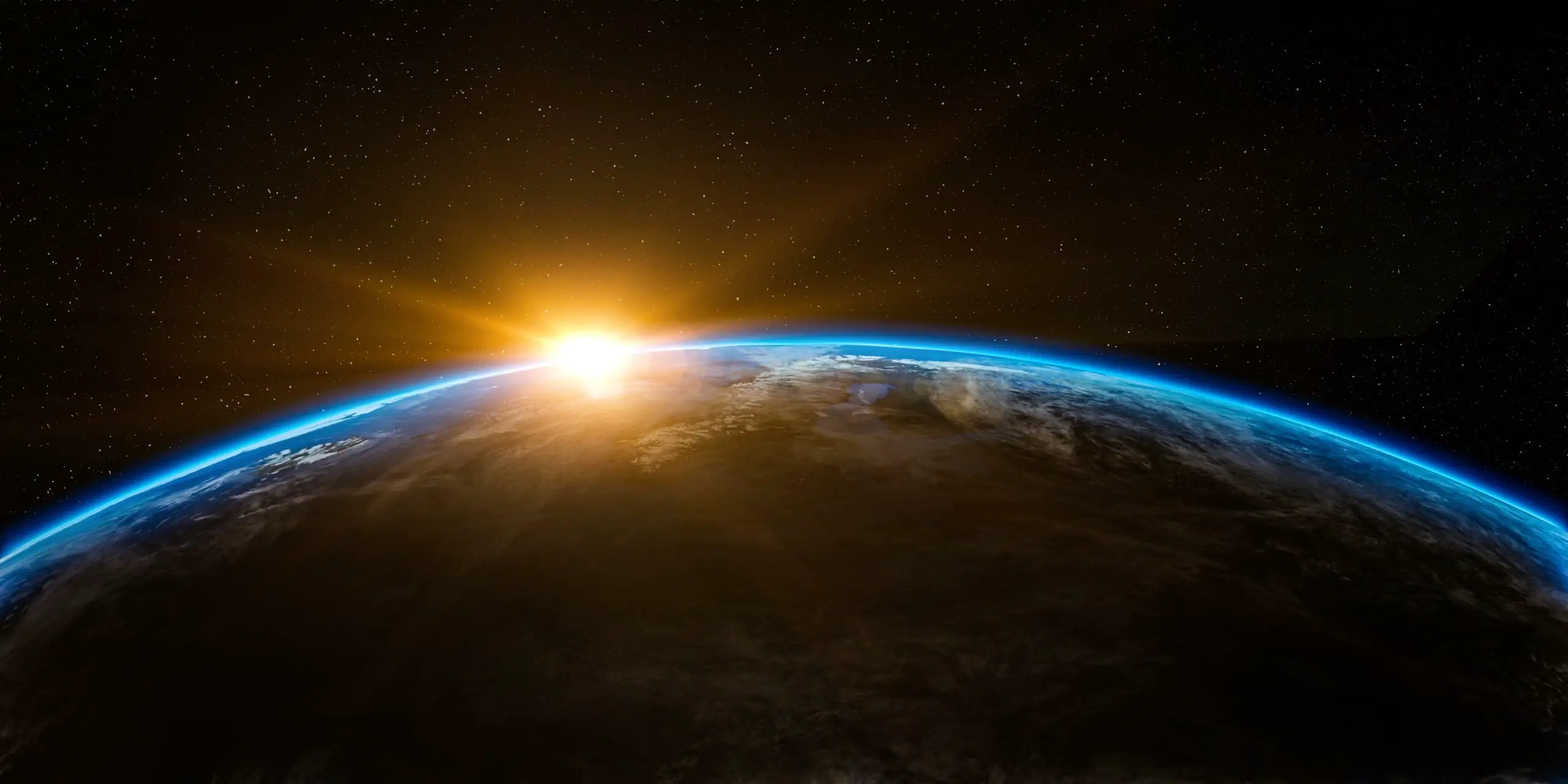How Far Can The Human Eye See- Find Out!
If you are wondering how far can the human eye see, just know that several factors decide how far we can see. Also, taking into consideration all the factors, we can see pretty far.
Also, if you are having this question- How far can the human eye see? You might have pictured yourself standing on a flat surface or a curved surface or imagined an object you want to see.
Based on the curvature of the Earth, when you are standing on a flat surface with a height of 5 feet or above, you can see nearly 3 miles away. This is considered to be the farthest edge you can see.
Also, researchers believe that without any interference in between, a person with healthy eyesight or average vision can see the flame of a candle from nearly 1.6 miles of distance.
From higher up without the curve of the earth, you will be able to locate certain objects from hundreds of miles away. This variation is fascinating, isn’t it? The human body is indeed complex.
Now that you know how far can the human eye see when you are standing on the ground, there might be some deciding factors, right? Of course, there are! Few things determine and influence how far can the human eye see when standing straight, these include:
- A person’s eyesight includes the function and health of the eye itself.
- The size of objects you are seeing.
- Any sort of hindrance or obstruction in the line of sight.
- The curve of the earth.
Let’s see each of these factors and some more to understand how far can the human eye see and how it is influenced by other factors.
How far can the human eye see
Your eyesight and visual acuity

You are quite familiar with the term “eyesight”, but have you heard of visual acuity? This term refers to the clarity of your vision. Experts estimate a healthy or normal visual acuity or clary of vision to be 20/20 vision. This simply indicates that a person could sharply see something 20 feet farther than they should be capable of seeing from that distance.
If you possess a 20/100 vision, you will still be able to view an object properly from 20 feet distance, but a person with normal eyesight will see it sharply from 100 feet.
Conversely, if anyone has a 20/12 vision, they can see an object clearly at 20 feet that other people are required to be 12 feet from to watch clearly.
How is the image processed by your eyes?
When you watch anything or see something, a complex yet rapid sequence of actions starts taking place in the brain and eyes. Here’s what happens:
- The light from an object reflects off and passes through your eye’s cornea or outer white layer, this layer is a transparent outer layer.
- The cornea of your eye further bends this light and allows all the rays to enter within the pupil of the eyes. The pupil is the dark center of our eyes enclosed in the cornea or white area.
- Also, at the same time, the muscles inside the iris (this is the colored area surrounding the pupil) controls the size of your pupil, making it larger when the settings are darker and smaller when the settings are brighter or in daylight.
- Light rays are then sent forward to pass through the lens inside the eyes which sharpens the rays as they reach the retina. The retina is the thin layer present at the back of your eyes and it has some cells called cones and rods.
- These cones and rods convert light rays by the object into electrical impulses, which later travels from your eyes to the brain through optic nerves. Your brain converts these rays into images, due to which you can see everything.
This process looks lengthy but it takes place within a fraction of time and occurs so fast that we cannot even visualize it. Assuming that all our body parts and different processes which are necessary for a clear vision are working perfectly fine, there are still few limitations on how far can the human eye see, these are:
- The size of the object you are seeing.
- Light
- Sightline or line of sight.
Curvature Of earth

The second factor that determines how far can the human eye see is the earth’s curvature. People use the term “line of sight” or simply “sightline” to mention the sight from the seat of an audience to the stage.
In real, the sightline is an uninterrupted visual angle from your eyes to the object or person you are trying to see. Besides, the obvious visual interference or obstructions lie in clouds, buildings, and trees. There is another major factor that reduces your line of sight, this is the curvature of the earth.
The curvature of the earth is nearly 8 inches every mile. Due to this length, when you are on a flat surface with your eyes at least 5 feet from the floor or ground, the farthest distance or edge you will be able to see is 3 miles, as already mentioned above.
Line of sight and angles
If you were simply resting or lying down on the beach such that your head was less than a foot from the ground, you will only be able to see a mile or so over the water.
However, if your position for viewing were slightly higher off the ground, the line of horizon must have been a lot farther. The earth’s curvature would not have begun to cut off things so soon or just at a distance of a mile.
For example, let us assume your tour through Nebraska first took you to Scotts Bluff National Monument, and for this, you climbed to the summit at a distance of 4659 feet. From this place, you will be able to see Laramie Peak, which is nearby 100 miles from Wyoming, as per National Park Service.
Brightness Influences Distance

To understand this factor that determines how far can the human eye see, let us consider the Lyra constellation and the brightest star of this cancellation, which is Vega. This is nearly 25 light-years away from our Earth. Without taking the use of a telescope or similar visual aid, Vega appears like a tiny candle flame in the night sky.
This star got the scientists and astronomers wondering how far can the human eye see. This is questionable, a human eye can detect a candle flame on the earth a few miles away only, not more than 1.5 miles but can see Vega located 25 light-years from our eyesight. How is this possible?
Scientists use magnitude to measure the brightness of stars. Researchers from A and M university in Texas performed certain experiments and concluded that a candle placed at a distance of 1286 feet away will possess the same brightness to our eyes that a Vega star does.
To take the research a bit higher and farther- the astronomers experimented further to find out the maximum distance a person could be to from the candle flame to view it.
The researchers concluded that a person with a healthy vision can identify a candle flame from approximately 1.6 miles away, hoping that there is no fog or any other hindrances.
Now, you might have a slight idea of how far can the human eye see. Let’s see discuss the distances of other objects.
Other Objects From Earth And Human Eye
Skyscrapers

You already know which is the tallest building in the world- it’s Burj Khalifa. The 124th floor building in Dubai is at a distance of 2700 feet from the ground. It offers a view of 50 miles when the day is clear as per Reuters.
This can provide people with 2 separate sunsets in a single day. This is given in an article in the Daily Mail.
If you time the elevator ride to the top floor just at the precise time, you will be able to watch the sunset over the horizon, and then a little bit later, you will also be able to see the sun again as the earth’s curvature and height of the building schemes you to look to the west.
If you are wondering what is the farthest distance we can see, it is 2.5 million light-years- The closest galaxy near the earth is Andromeda Galaxy and it is a rotating assemblage of nearly 1 trillion stars. This distance is the largest which people could see an object from with their naked eye, acknowledgments to the endless volume of light arriving or emerging from the burning stars of Andromeda.

With recent technology, it would require 94.5 billion Earth years for us to progress to its edge. That is quite far for denoting the most faraway object we can recognize.
In reality, it is also said that humans possess infinite vision but it mostly depends on the size of the object we wish to detect or see. How large the distant object determines how far can the human eye see. We might technically see even beyond the Andromeda galaxy if any brighter or larger galaxy was present having a powerful source of light.
As already said, the human body is incredible yet complex.
The Bottom Line
As the bottom line of this topic- how far can the human eye see, you can simply remember an example. If you are traveling in an airplane at a cruising altitude of 35000 feet, you will nearly be 7 miles above the surface of the earth.
Yet, when it is daytime, you can look down and view farms, rivers, highways, and visible landmarks easily. Nothing will block the way, and due to the curvature of the earth, these landmarks are out for you to watch.
In this situation, the only limit to how far you will be able to see is your visual acuity and eye health.
This was all about how far can the human eye see. What do you think? Is it infinite in your opinion?


[…] people probably do not even realize if they sleep with their eyes open unless someone mentions it. But, if you are constantly waking up with dry eye signs, such as […]